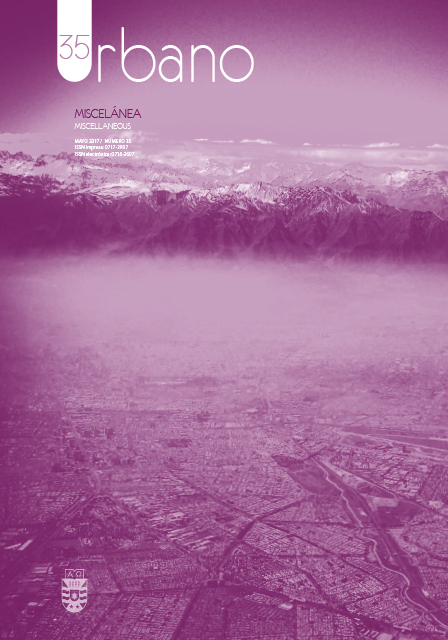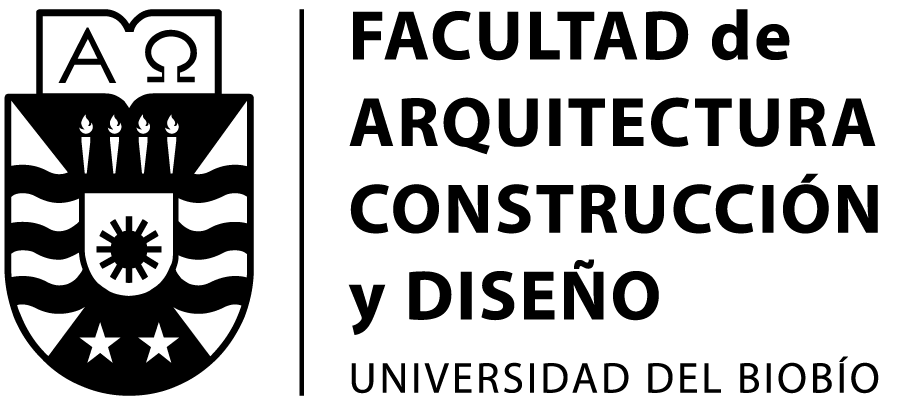Residential satisfaction: the resident´s experience as an urban planning tool. the case of the embajadores neighborhood, Madrid
DOI:
https://doi.org/10.22320/07183607.2017.20.35.07Keywords:
cognition, perception, urban planning, urban rehabilitation, residential satisfaction.Abstract
Urban rehabilitation projects make a signi cant effort to improve and revitalize the physical characteristics and social and productive dynamics of disadvantaged areas within the existing urban structure. However, perceptions or opinions based on the resident’s experience are not always taken into consideration in these urban intervention processes, which leads to the development of decontextualized, underused or inappropriate projects that can cause residential dissatisfaction in their inhabitants. The poor management of these procedures and the loss of information about the residents ́ assessment of these interventions also hinder the possibilities for feedback and improvement of these actions through the planning process. Based on the above, this article shows the results of an analysis of several indicators examined after an urban rehabilitation project in a neighborhood of Madrid, Spain, with the purpose of showing the importance that some variables related to the changes lived in the neighborhood and residents ́ assessments of such alterations may have on residential satisfaction. The conclusions reveal the importance of including new instruments in the processes of urban planning that would make it possible to identify the perception of the residents throughout such processes.
Downloads
References
ADRIAANSE, C. C. M. Measuring residential satisfaction: a residential environmental satisfaction scale (RESS). Journal of housing and the built environment, 2007, vol. 22, nº 3, pp. 287-304.
AMÉRIGO, María y ARAGONÉS, Juan Ignacio. Satisfacción residencial en un barrio remodelado: Predictores físicos y sociales. Revista de Psicología Social, 1988, vol. 3, n°1, pp. 61-70.
BARAÑANO, Margarita; RIESCO, Alberto; ROMERO, Carmen y GARCÍA, Jorge. Globalización, inmigración transnacional y reestructuración de la región metropolitana de Madrid. Estudio del barrio de Embajadores. 1 ed. Madrid: Fundación de Estudios Sindicales, Ediciones GPS, 2006.
BROWN, Barbara; PERKINS, Douglas y BROWN, Graham. Place attachment in a revitalizing neighborhood: Individual and block levels of analysis. Journal of environmental psychology, 2003, vol. 23, n° 3, pp. 259-271.
CAÑEDO, Montse. Políticas urbanísticas en el centro de Madrid: la Rehabilitación de Lavapiés [en línea]. En: FICYURB. First International Conference of Young Urban Researchers. Centro de Investigação e Estudos de Sociologia, Instituto Universitàrio de Lisboa (Presidente), Lisboa, 2007. [Consultado 12 mayo 2015]. Disponible en: http://conferencias.iscte.pt/viewabstract.php?id=137&cf=3
CASTRILLO, María; MATESANZ, Ángela; SÁNCHEZ, Domingo y SEVILLA, Álvaro. ¿Regeneración urbana? Deconstrucción y reconstrucción de un concepto incuestionado. Papeles de relaciones ecosociales y cambio global, vol. 1, n° 26, pp. 129-139, 2014.
CHOMBART DE LAUWE, Paul. Appropriation of space and social change [en línea]. En: International Architectural Psychology Conference (3, 1976, Estrasburgo). Proceedings of the 3rd. International Architectural Psychology Conference. [Consultado 10 enero 2017]. Disponible en: http://iaps.scix.net/cgi-bin/works/Show?iaps_00_1976_001
COMISIÓN EUROPEA. Carta de Leipzig sobre las Ciudades Europeas Sostenibles 2007 [en línea]. Disponible en: https://www.fomento.gob.es/NR/rdonlyres/91B5958A-585C-4E92-8B1F-C06F5CBC4C4B/111500/LeipzigCharte_Es_cle139ba4.pdf
COMISIÓN EUROPEA. Reunión Informal de Ministros de Desarrollo Urbano Declaración de Toledo, 22 Junio de 2010 [en línea] [Consultado 10 enero 2017]. Disponible en: http://ec.europa.eu/regional_policy/archive/newsroom/pdf/201006_toledo_declaration_es.pdf
DE ANDRADE Roméro, Marcelo y ORNSTEIN, Sheila. Eds. Avaliação Pós- Ocupação: métodos e técnicas aplicados à habitação social. Porto Alegre:ANTAC, 2003.
DEKKER, Karien; DE VOS, Sjoerd.; MUSTERD, Sako y VAN KEMPEN, Ronald. Residential satisfaction in housing estates in European cities: a multi-level research :approach. Housing Studies. 2011, vol. 26, n°4, pp. 479-499.
HIDALGO, María Carmen. Apego al lugar: Ámbitos, dimensiones y estilos. Tesis doctoral inédita, Universidad de La Laguna, España, 1998.
HULL, R. Bruce; LAM, Mark; VIGO, Gabriela. Place identity: symbols of self in the urban fabric. Landscape and urban planning, 1994, vol. 28, n°2, pp. 109-120.
LALLI, Marco. Urban-related identity: Theory, measurement, and empirical findings. Journal of environmental psychology, 1992, vol. 12, n° 4, pp. 285-303.
LÓPEZ DE LUCIO, Ramón. La nueva geografía de la producción y el consumo: Reestructuración industrial, ejes terciarios y nuevas centralidades. En: LÓPEZ DE LUCIO, Ramón. Madrid 1979-1999, La transformación de la ciudad en veinte años de ayuntamientos democráticos. Madrid: Gerencia Municipal de urbanismo del Ayuntamiento de Madrid, 1999, pp.185-224.
MANNARINI, Terri; ROCHIRA, Alessia y TALÒ, Cosimo. How identification processes and inter-community relationships affect sense of community. Journal of community psychology, 2012, vol. 40, n° 8, pp. 951-967.
MATESANZ, Ángela y HERNÁNDEZ, Agustín. La rehabilitación urbana como integración en la ciudad. Modelo de análisis desde la experiencia española. REVISTARQUIS [en línea]. 2016, vol. 5, n°2. [Consultado 06 enero 2017]. Disponible en: http://revistas.ucr.ac.cr/index.php/revistarquis/article/view/27138
MINISTERIO DE OBRAS PÚBLICAS Y URBANISMO. Programa de Actuación Inmediata PAI Centro. COPLACO. Madrid, 1982.
PÉREZ, Vicente. Lavapiés: Intervención y rehabilitación 1998-2008. Madrid: Empresa Municipal de Vivienda y Suelo, 2010.
POTTER, James y CANTARERO, Rodrigo. How does increasing population and diversity affect resident satisfaction? A small community case study. Environment and Behavior, 2006, vol. 38, n°5, pp. 605-625.
PREZZA, Miretta; AMICI, Matilde; ROBERTI, Tiziana y TEDESCHI, Gloria. Sense of community referred to the whole town: Its relations with neighboring, loneliness, life satisfaction, and area of residence. Journal of community psychology, 2001, vol. 29, n° 1, pp. 29-52.
PROSHANSKY, Harold; FABIAN, Abbe y KAMINOFF, Robert. Place-identity: Physical world socialization of the self. Journal of environmental psychology, 1983, vol. 3, n° 1, pp. 57-83.
RUBIO DEL VAL, Juan. Rehabilitación Urbana en España (1989-2010). Barreras actuales y sugerencias para su eliminación. Informes de la Construcción, 2011, vol. 63, n° Extra, pp. 5- 20.
SHUMAKER, Sally y TAYLOR, Ralph. Toward a clarification of people-place relationships: A model of attachment to place. En: FEIMER, Nickolaus y GELLER E. Scott (eds.). Environmental psychology: Directions and perspectives. Virginia: Praeger, 1983, pp. 219-256.
TAYLOR, Ralph. Neighborhood responses to disorder and local attachments: The systemic model of attachment, social disorganization, and neighborhood use value. Sociological Forum, 1996, vol. 11, n° 1, pp. 41-74.
VALERA, Sergi; GUÀRDIA, Joan; CRUELLS, Eva; PARICIO, Ana; POL, Olga; REIXACH, Núria; SCHILMAN, Natalia y WIRTH, Louis. Urbanism as a Way of Life. American journal of sociology, 1938, vol. 44, n° 1, pp. 1-24.
ZIMRING, Craig M. y REIZENSTEIN Janet E. Post-occupancy evaluation an overview. Environment and Behavior, 1980, vol. 12, n° 4, pp. 429-450.
Downloads
Published
How to Cite
Issue
Section
License
The content of articles which are published in each edition of Habitat Sustentable, is the exclusive responsibility of the author(s) and does not necessarily represent the thinking or compromise the opinion of University of the Bio-Bio.
The author(s) conserve their copyright and guarantee to the journal, the right of first publication of their work. This will simultaneously be subject to the Creative Commons Recognition License CC BY-SA, which allows others to share-copy, transform or create new materials from this work for non-commercial purposes, as long as they recognize authorship and the first publication in this journal, and its new creations are under a license with the same terms.![]()























